A brand name should be snappy, ingenious, memorable, unique, convey a multitude of values and make the product fly off the shelves. Simple. Steve Hemsley gets in there with the creative types to see how it's done
Imagine being paid to crawl along the floor with your shoes off to the sound of classical music while pretending to be a cartoon character. Or being told by your boss to spend all day in a local pub where you must immerse yourself in the genial atmosphere of young people socialising in the hope of clearing your mind and releasing your creative juices.
Those involved in the naming of new food and drink brands will try almost anything for inspiration as they struggle to come up with a name that is not only original but can be used internationally and yet still captures the essence of the brand. One agency creative director regularly locks himself in a room with a towel over his head and a Latin dictionary.
But for all the brand names rooted firmly in the qualities and content of their offerings and services, there is another and growing band that say nothing whatsoever about the commodity for sale.
Look at the online banks Egg, Smile and now Cahoot designed to give the impression of hatching savings while reassuring customers money matters are fun, modern, irreverent and sexy. The names also distance the products from their respective staid high street parents the Prudential, Cooperative Bank and Abbey National.
So the process of coming up with names for new products is complex and further complicated by the need for internet workable profiles. Getting it right can take months and cost tens of thousands of pounds, and that's before you fork out for the domain name someone else has pinched from under your nose.
Web sites, too, need hip identities. Internet marketing consultant Nick House says a domain name can make or break the success of a company's e-commerce site. He advises that ideally it should be seven letters or less, with no hyphens, dots or dashes. "It should be like a telephone number that rolls off the tongue and if someone mentions a good site in the pub you can still remember it when you get home such as Jungle.com," he says.
Oneview.net will register domain names for businesses and has put together sites such as www.johntaylor-meats.co.uk for local Coventry butcher John Taylor and Son and www.stantonwineco.co.uk for mail order wine business The Stanton Wine Company. Oneview.net director Robert Smith says companies embracing the Internet must decide whether their site is aimed at existing customers who know the brand and will search the worldwide web by the company's name (such as tesco.co.uk), or if they want to use the web primarily to attract consumers who may be unaware that their service exists. "Sometimes a generic name is better. Rather than bloggsgrocers.com, what about applesandpears.com or Sussexbakers.co.uk for regional enquiries?" he says.
Back from cyberspace and onto the supermarket shelf, Pauline Amphlett, director of intellectual property at identity and naming company Brand Guardians, which named Baars' Maidwell margarine and Pillsbury Toaster Pockets among others, says the name is the first and greatest expression of the brand. "It is vital you get it right and we carry out extensive consumer research. For a food launch we might ask for a description of the product, and get people to be wishful and tell us what they would like it to do for them," she says.
"For Maidwell, some people said they wanted it to taste like a summer's day. We threw this into our internal creative brainstorming sessions where our experts considered what a summer's day would taste like and then thought of related words. These acted as our basic raw material and when we had a shortlist we went through the linguistic, cultural and legal trademark checking stages."
One way to avoid language and translation difficulties for products destined for global distribution is to invent a completely new word (such as Toyota's Avensis), although you must be careful which letters you use. The sounds for R and L, for instance, can be confusing and difficult for Asian consumers to pronounce, which might deter them from asking for your product.
Studies by branding consultancy Interbrand Group, which has offices in 22 countries, also warn against using the number 8 when launching a food product in China because of connotations with death, while product managers must remember that many cultures read from right to left which can cause difficulties with names and packaging. Interbrand's director of naming, Simon Luke, recalls the story of a washing powder that used three cartoon images on its packaging, the first illustrating a dirty shirt, the second the shirt going into the washing machine and the third a clean shirt. When the packaging was launched in China it read the other way around.
Interbrand was responsible for the Hob Nobs biscuit name created because the biscuits are nobbly and hob-nobbing suggests socialising and therefore tea breaks as well as Sainsbury's Fresh Creations meal kits. "For Sainsbury's we needed a name that expressed that the food was fresh and here was something you made yourself," says Luke.
Britvic recently launched Ruby's cranberry drink which if it was a person, says head of new product development Diana Taylor, would be a cross between Dawn French, Ruby Wax and Eddie Izzard.
"The brief was to find a name that summed up the brand values of the drink; which we saw as adult, fun, voluptuous and tasty. Our creative name workshops are very successful and include energising sessions where everyone takes a break and maybe plays a group game or two," she says.
One of the most difficult naming processes is for a new company created by a merger or takeover. Boardroom egos must be juggled with the need to retain the goodwill and brand heritage associated with the two or more companies that have joined forces.
When Guinness and Grand Metropolitan came together, responsibility for creating a name for the new company was given to identity and branding consultancy Wolff Olins.
The merger had formed a global group with a market capitalisation of £24bn and the name had to unite a diverse portfolio of food and drinks brands such as Burger King, Häagen-Dazs, Baileys, Smirnoff as well as Gordon's Gin, Malibu and, of course, Guinness.
Wolff Olins was directly responsible for defining the visions and values of the enlarged group and decided a name was needed that expressed the themes of every day', everywhere' and pleasure'. The result, Diageo, was based on the Latin for day (dies) and the Greek for world (geo).
Director of consulting at Wolff Olins, Jonathan Knowles, says that initially it was difficult to convince the new board that the name was suitable. "Companies will rarely decide on a new name by committee so someone had to take a decision.
"The name Diageo, like the names it replaced, is the most personal and emotive part of the new company and says that every day, around the world millions of people enjoy Diageo brands," he says.
Wolff Olins was also responsible in 1993 for creating Milk Marque, the new name and logo for the Milk Marketing Board (MMB). The name of what became a voluntary cooperative had to appeal to farmers and other commercial producers after the end of the MMB's life as a statutory monopoly.
When companies, whatever their size, decide they want to change the name of a particular product to harmonise its global image, they risk upsetting loyal consumers.
One early example of name rationalisation was Mars' decision in the mid '90s to change the name of its Marathon bar in the UK to Snickers. Many have followed in its footsteps including Oil of Olay (formerly Ulay) from Procter & Gamble.
One agency director involved in the project says Mars had to decide whether to spend months softening up consumers for the change or employ a short, sharp, shock heavyweight advertising campaign informing consumers and retailers about what was happening, but stressing that everything else about the product remained unaltered.
The decision made was a risk, but naming experts say that although there was some initial opposition to the change, the product itself first manufactured in 1930 and today the number one selling candy bar in the United States was popular enough in the UK to survive the change.
Daniel Dumoulin, joint md at Research International Qualiatif responsible for global naming for clients such as Kimberly-Clark, Unilever and Birds Eye Wall's, says more businesses are looking for names that have global appeal while one notable trend is that company names such as Wall's and Nestlé are slowly becoming megabrands in their own right and appearing larger on product packaging. "These names have their own value and reassure consumers that what they are buying is of a certain quality."
However companies choose to do business in future, whether online or through traditional stores, the competitive nature of retailing will ensure that the name of a product or business will remain key to its long-term success. For the creative teams responsible, finding new names will remain fun and games. n
{{COVER FEATURE }}
Close menu
- Home
- Retail & Wholesale
-
Products & Suppliers
- Back to parent navigation item
- Products & Suppliers
-
Product Categories:
- Back to parent navigation item
- Product Categories:
- Alcoholic drinks
- Bakery
- Cereals & breakfast
- Cheese
- Chicken & poultry
- Chocolate
- Confectionery
- Crisps, nuts & snacks
- Dairy
- Fish
- Fresh produce
- Frozen
- Household
- Meat
- Own Label
- Sauces & condiments
- Seasonal
- Soft drinks
- Vaping
- Vegan & plant-based
- World foods
- Suppliers
- People
- Reports & Data
-
Topics A-Z
- Back to parent navigation item
- Topics A-Z
-
Popular topics:
- Back to parent navigation item
- Popular topics:
- Cost of living crisis
- Crime
- Deposit Return Schemes
- Finance
- Government & Regulation
- Health
- Inflation
- Loyalty
- Marketing
- Mergers & Acquisitions
- New Product Development
- Sourcing
- Supply chain
- Sustainability & environment
- Technology
- Ultra Processed Foods
- Vaping
- A-Z all topics
- Content by type:
- Events
- Subscribe now
Sign in to comment on this article
Not logged in before? Register for FREE guest access today.
You will be able to:
- Read more stories
- Receive daily newsletters
- Comment on stories
Advert

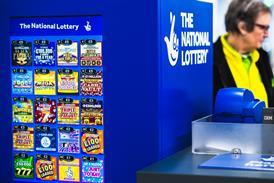
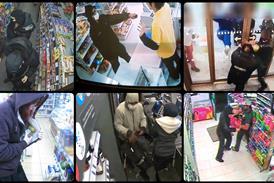

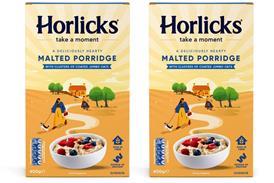
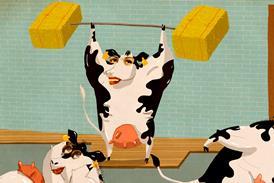
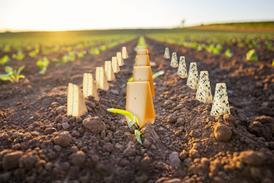


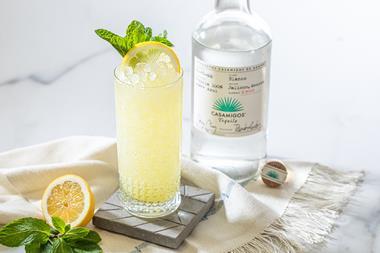
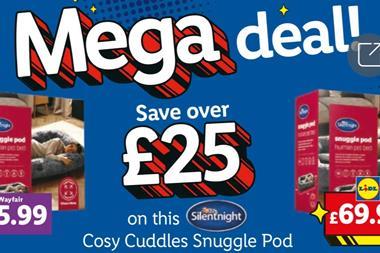
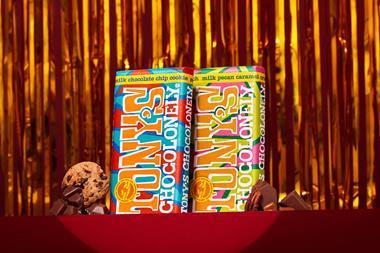

No comments yet